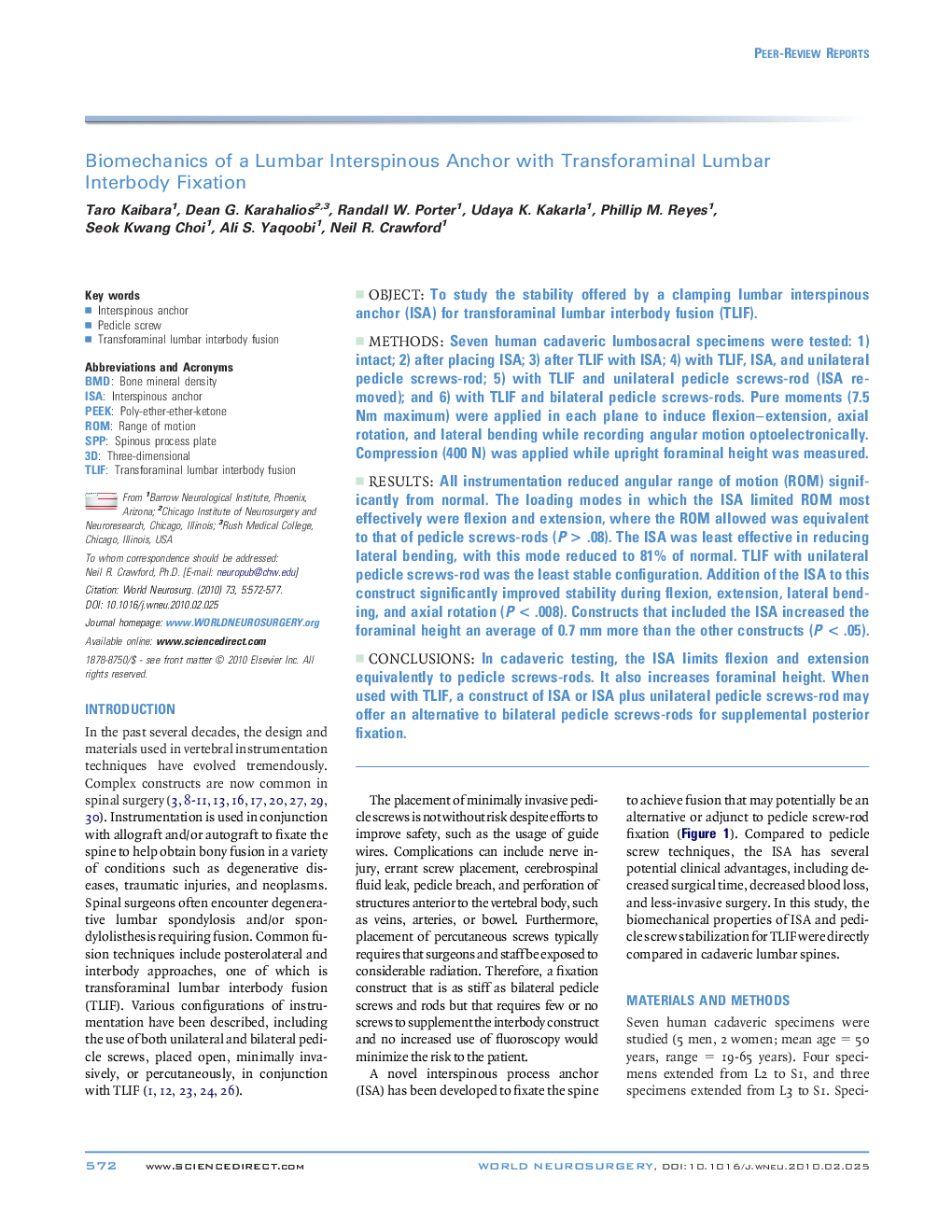| Article ID | Journal | Published Year | Pages | File Type |
|---|---|---|---|---|
| 3097561 | World Neurosurgery | 2010 | 6 Pages |
ObjectTo study the stability offered by a clamping lumbar interspinous anchor (ISA) for transforaminal lumbar interbody fusion (TLIF).MethodsSeven human cadaveric lumbosacral specimens were tested: 1) intact; 2) after placing ISA; 3) after TLIF with ISA; 4) with TLIF, ISA, and unilateral pedicle screws-rod; 5) with TLIF and unilateral pedicle screws-rod (ISA removed); and 6) with TLIF and bilateral pedicle screws-rods. Pure moments (7.5 Nm maximum) were applied in each plane to induce flexion–extension, axial rotation, and lateral bending while recording angular motion optoelectronically. Compression (400 N) was applied while upright foraminal height was measured.ResultsAll instrumentation reduced angular range of motion (ROM) significantly from normal. The loading modes in which the ISA limited ROM most effectively were flexion and extension, where the ROM allowed was equivalent to that of pedicle screws-rods (P > .08). The ISA was least effective in reducing lateral bending, with this mode reduced to 81% of normal. TLIF with unilateral pedicle screws-rod was the least stable configuration. Addition of the ISA to this construct significantly improved stability during flexion, extension, lateral bending, and axial rotation (P < .008). Constructs that included the ISA increased the foraminal height an average of 0.7 mm more than the other constructs (P < .05).ConclusionsIn cadaveric testing, the ISA limits flexion and extension equivalently to pedicle screws-rods. It also increases foraminal height. When used with TLIF, a construct of ISA or ISA plus unilateral pedicle screws-rod may offer an alternative to bilateral pedicle screws-rods for supplemental posterior fixation.
